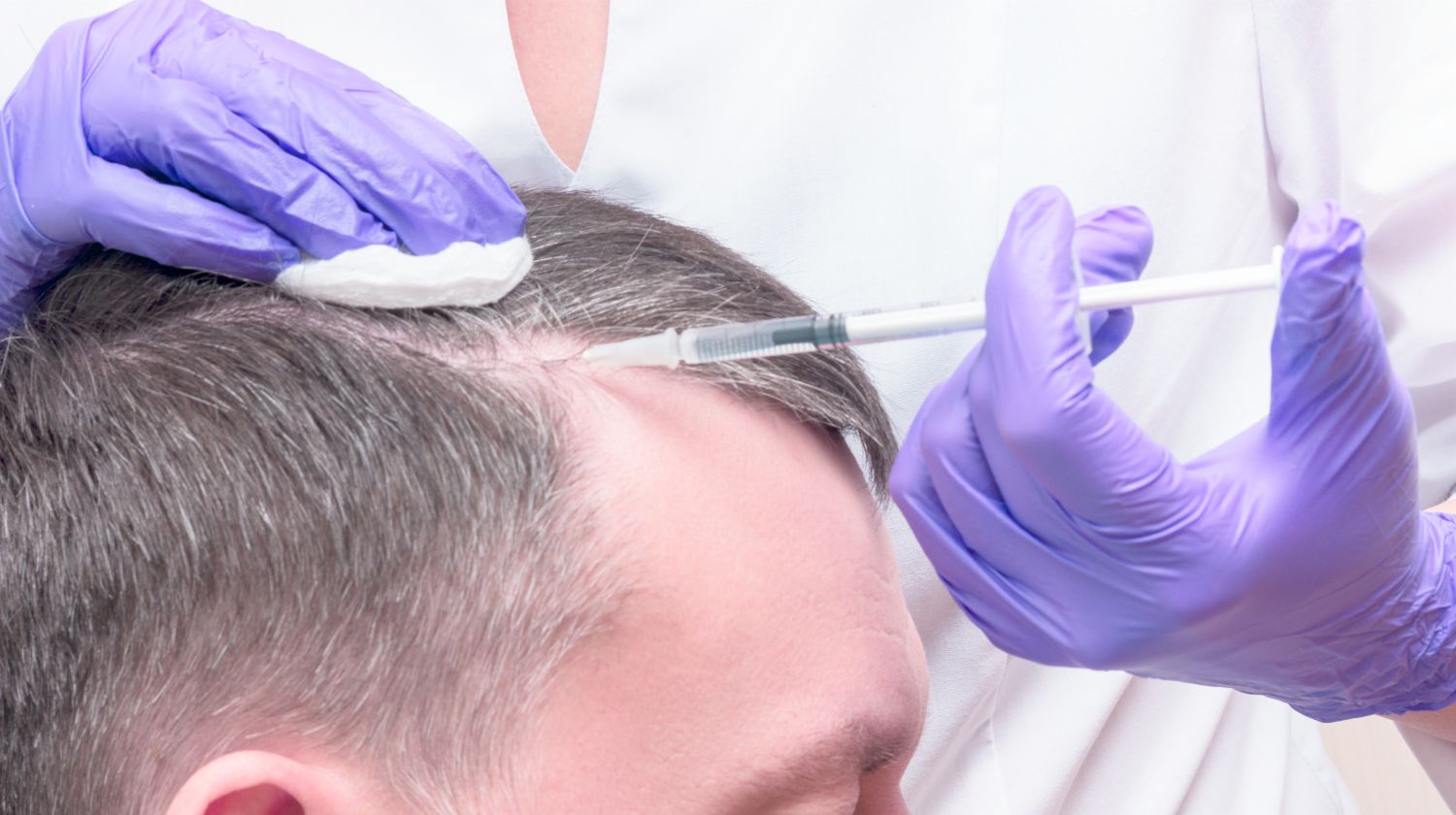Home » Services » Injectables » Hair Loss Treatment

Platelet-Rich Plasma therapy for hair loss is a cutting-edge, non-surgical treatment that harnesses the healing power of your own blood to stimulate natural hair growth. This procedure involves drawing a small amount of blood, processing it to concentrate the platelets, and then injecting the Platelet-Rich Plasma into the scalp. Rich in growth factors, Platelet-Rich Plasma promotes the regeneration of hair follicles, strengthens existing hair, and improves overall hair density. The procedure is minimally invasive, virtually painless, and requires no downtime, making it an attractive option for individuals seeking a safe and effective solution for hair loss. With a track record of success, Platelet-Rich Plasma therapy offers a holistic approach to hair restoration, addressing both the symptoms and underlying causes of hair thinning, ultimately helping individuals regain their confidence and achieve fuller, healthier hair.
Rated 5 Stars by 500+ Satisfied Clients
Before your Platelet-Rich Plasma appointment with Bradford Skin Clinic, anticipate a comprehensive and patient-centric experience designed to ensure your comfort and understanding of the procedure. Begin by familiarizing yourself with the details of Platelet-Rich Plasma therapy, understanding the process, and its potential benefits for hair restoration. It’s advisable to compile a list of questions or concerns you may have about the treatment, ensuring that you can discuss them during your appointment for clarity and peace of mind. If the clinic has provided any specific pre-appointment instructions, such as skincare routines or restrictions, make sure to adhere to them closely. Arrive a bit earlier than your scheduled time to complete any necessary paperwork and allow for a relaxed check-in process. The professional team at Bradford Skin Clinic is committed to creating a supportive environment, and your pre-appointment experience will be characterized by clear communication and a focus on your individual needs and expectations.
After your Platelet-Rich Plasma treatment with Bradford Skin Clinic, you can look forward to a thoughtful and supportive post-treatment experience. The expert team at the clinic will provide you with clear instructions for aftercare, including any specific skincare routines or precautions to enhance the effectiveness of the Platelet-Rich Plasma therapy. It’s normal to experience mild redness or swelling at the injection site, but the clinic’s professionals will guide you on managing these temporary effects. Expect personalized guidance on when to resume regular activities and whether any follow-up appointments are necessary. Bradford Skin Clinic is committed to your ongoing well-being, and their team will be available to address any questions or concerns that may arise during your recovery period. Rest assured, you’re in capable hands as you navigate the post-Platelet-Rich Plasma phase, working towards achieving optimal results for your hair restoration journey.